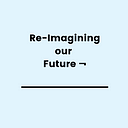Re-Imagining Cities
I am currently in India, having arrived here from NYC just before the COVID19 lockdowns began. These many months of semi-forced semi-isolation have allowed me to look at a very different set of circumstances with a different set of eyes.
As I look at the spread of urbanization, I realize that we are dealing with outdated mental models.
In the old days of low population density, houses sat in open fields in village settings. Villages became towns, but they were still surrounded by substantial open spaces. Towns grew and grew, they became cities. The human-to-nature ratio had changed, so cities created parks. But now, cities are becoming mega-cities.
In this progression there is one thing that has not changed: our mental model of what a house is.
A house is a structure that holds the needs of humans in safety, away from the uncertainties of weather and Nature’s creatures. In an open field setting, that was fine, because Nature’s dynamics could still express themselves in their natural way; such as with wind flows, pollination, bird migrations, insect lifecycles, etc.
But as houses became crowded together in larger and larger numbers, in taller and taller buildings, cities reached a tipping point where the climate within cities was no longer the climate of Nature. Cities have become climate generators. Cities have micro-climates within them, but they also affect the surrounding climate in macro ways.
We have been designing cities by accident, by taking the old mental model of a “house in a village”, and scaling it up. We have been unaware of tipping points. We have viewed Nature as an ‘infinite sink’ from which we can extract whatever we want, whenever we want it, in whatever quantity that we want it. “Smart cities” as they have been envisioned thus far, have not improved on this old mental model, they have just layered technology on top of it.
We need to bring nature back into cities. Not just to feed human needs, but to rebuild Nature itself. The city is an ecosystem, we need to understand it, and embrace it.
Could you imagine?
Multistory apartment buildings in which the ground floor is open, and the bare soil is planted with trees and flowers. Every building thus has its own park, which its elderly residents and its children can visit unattended, without the huge costs of a city-wide parks service. Rainwater flows into the soil and replenishes the water table, instead of flooding sewers. The ‘tunnel effect’ created by narrow streets and tall buildings is mostly eliminated, which in turn eliminates the 40x concentration of ground level particulate pollution. Noise pollution from cars is dampened and no longer affects the hearing of our babies. Nature deficit disorder disappears, and reduces stress and crime rates too. Birds, insects, flora and fauna are able to cohabit with us. We could have all that without changing anything else: roads, sidewalks, urban trains systems and businesses would remain as they are today. The city can be a regenerative space.
Could you also imagine cities where roofs are full of vegetable gardens? Where public spaces are beautified, and just walking through the city gives you a sense of awe? Could you imagine sitting in a bus or a train, seeing a poem on the wall and sharing thoughts about it with the stranger sitting next to you? A city, where you feel safe, comfortable, and creative? A city that encourages healthy behavior, where the defaults are set with the best interest of the consumer, instead of the producer? Really, we are all the producers, and the consumers. There is no other way around it. What is good for you is good for me. What is good for cities, is good for the world.
Lead Author: Tanuja Prasad
Tanuja Prasad founded a company ApplyComplexity, where she focuses on conducting multi-disciplinary research on the application of complexity science to the impact sector. You can check out a recent article she wrote, titled Complex Adaptive Systems Theory and Inter-Rater Reliability, or listen to a podcast interview that she conducted on interconnected, nonlinear systems.
Anchor Author (final paragraph)
Daniel Rudolph is interested in exploring alternative, experiential learning opportunities for people of all ages. He will be co-facilitating a course, called Re-Imagining Our Future, which will start on October 26.
